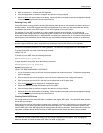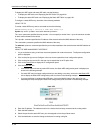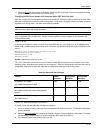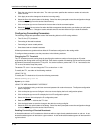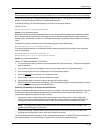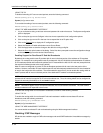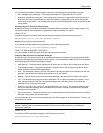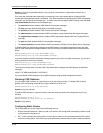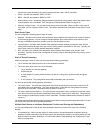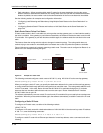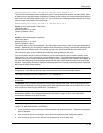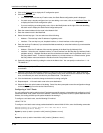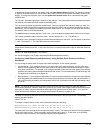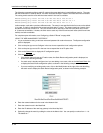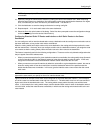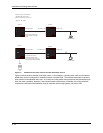
Configuring IP
sources to the same destination, the routing switch places the route in the IP route table.
• OSPF – See RIP, but substitute “OSPF” for “RIP”.
• BGP4 – See RIP, but substitute “BGP4” for “RIP”.
• Default network route – A statically configured default route that the routing switch uses if other default routes
to the destination are not available. See “Configuring a Default Network Route” on page 6-46.
• Statically configured route – You can add routes directly to the route table. When you add a route to the IP
route table, you are creating a static IP route. This section describes how to add static routes to the IP route
table.
Static Route Types
You can configure the following types of static IP routes:
• Standard – the static route consists of the destination network address and network mask, and the IP address
of the next-hop gateway. You can configure multiple standard static routes with the same metric for load
sharing or with different metrics to provide a primary route and backup routes.
• Interface-based – the static route consists of the destination network address and network mask, and the
routing switch interface through which you want the routing switch to send traffic for the route. Typically, this
type of static route is for directly attached destination networks.
• Null – the static route consists of the destination network address and network mask, and the “null0”
parameter. Typically, the null route is configured as a backup route for discarding traffic if the primary route is
unavailable.
Static IP Route Parameters
When you configure a static IP route, you must specify the following parameters:
• The IP address and network mask for the route’s destination network.
• The route’s path, which can be one of the following:
• The IP address of a next-hop gateway
• An Ethernet port
• A virtual interface (a routing interface used by VLANs for routing Layer 3 protocol traffic among one
another)
• A “null” interface. The routing switch drops traffic forwarded to the null interface.
You also can specify the following optional parameters:
• The route’s metric – The value the routing switch uses when comparing this route to other routes in the IP
route table to the same destination. The metric applies only to routes that the routing switch has already
placed in the IP route table. The default metric for static IP routes is 1.
• The route’s administrative distance – The value that the routing switch uses to compare this route with routes
from other route sources to the same destination before placing a route in the IP route table. This parameter
does not apply to routes that are already in the IP route table. The default administrative distance for static IP
routes is 1.
The default metric and administrative distance values ensure that the routing switch always prefers static IP routes
over routes from other sources to the same destination.
Multiple Static Routes to the Same Destination Provide Load Sharing and Redundancy
You can add multiple static routes for the same destination network to provide one or more of the following
benefits:
• IP load balancing – When you add multiple IP static routes for the same destination to different next-hop
gateways, and the routes each have the same metric and administrative distance, the routing switch can load
balance traffic to the routes’ destination. For information about IP load balancing, see “Configuring IP Load
Sharing” on page 6-48.
6 - 37



